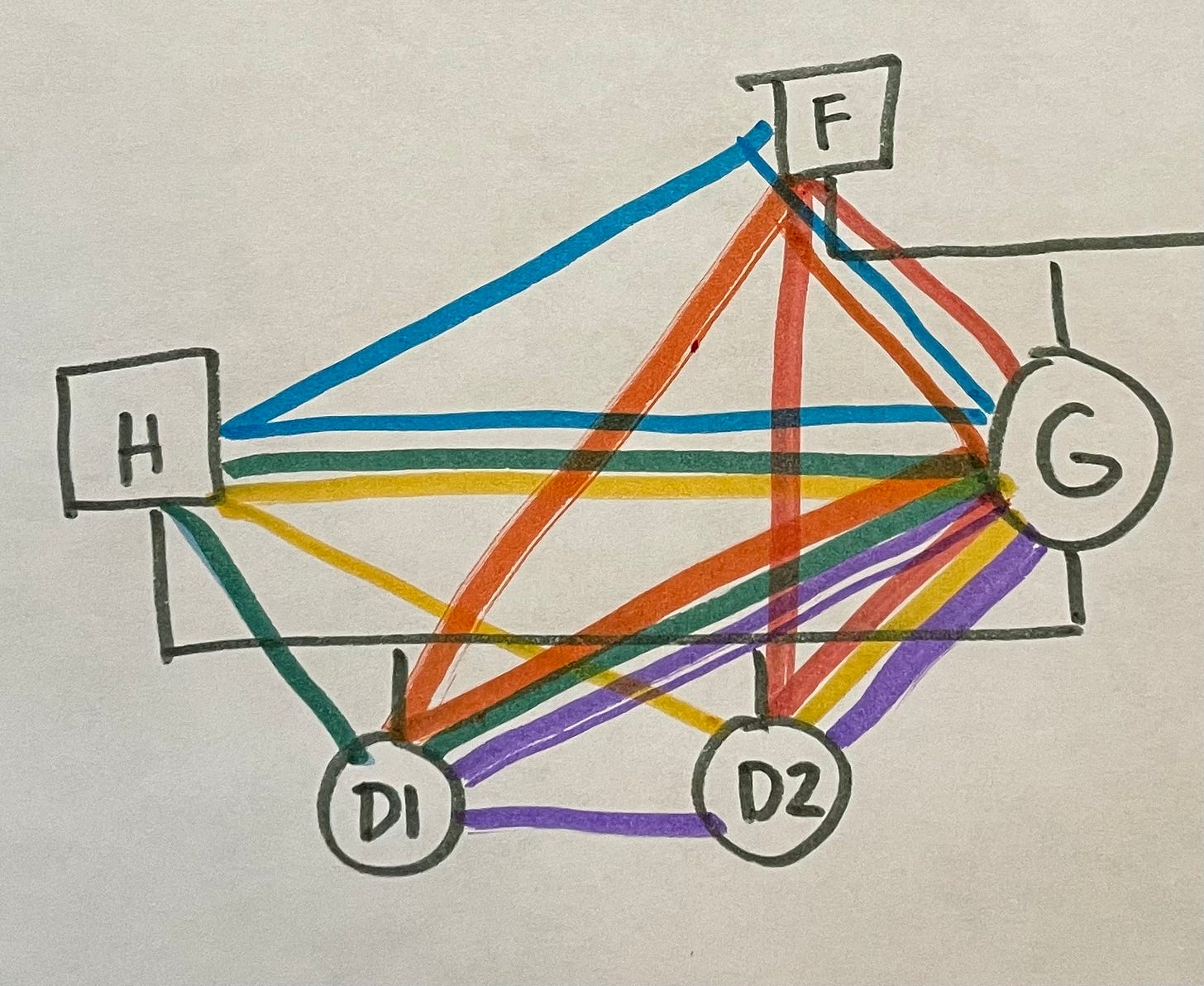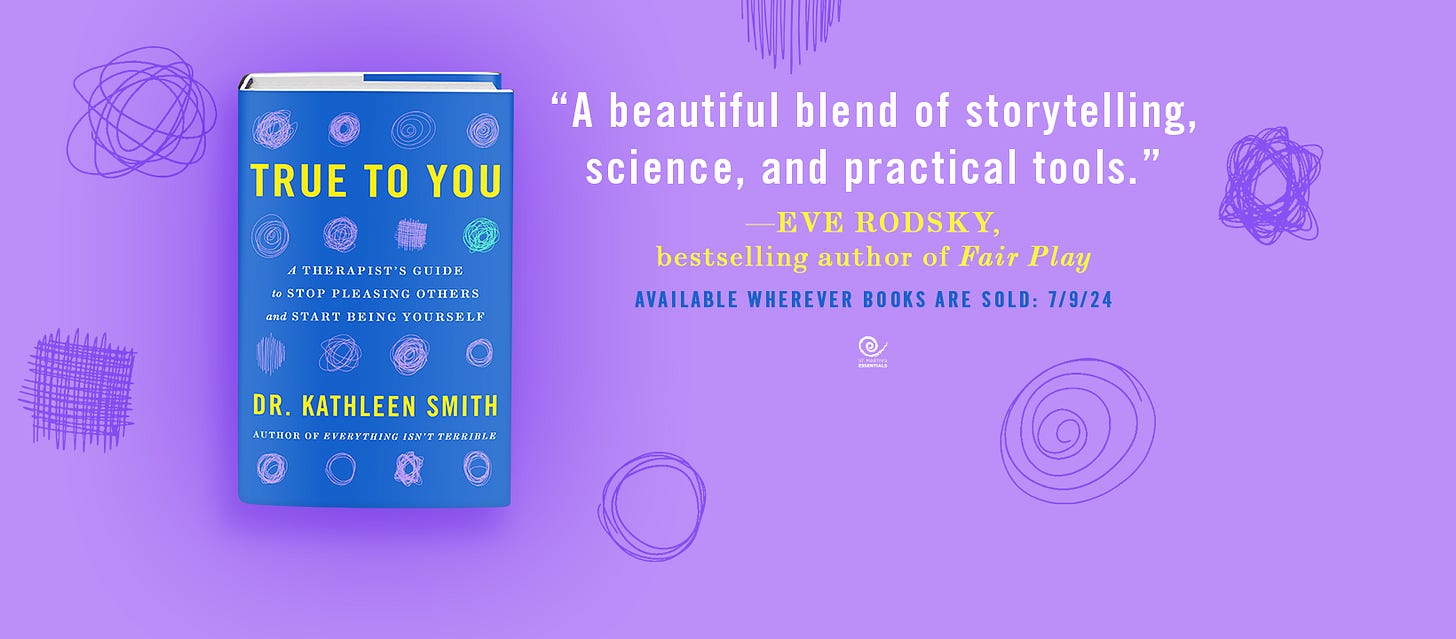Do you ever find yourself wishing that therapy had more word problems? If so, you’ve come to the right place. See what you can do with this one.
Gloria lives in a house with her husband, her father, and her two teenage daughters. She is learning about emotional triangles and wondering how they function at home. How many triangles are living in her house? How many of these triangles is she a part of?
If you want to look impressive, you can do the equation:
6C3 = 6! / (3!(6-3)!) = 654 / (321) = 20
Or you can just draw it out. Either way, you’ll find that there are 20 different triangles that could be deployed to manage tension in this household system. Of these 20, Gloria (G) lives in 6 of them (see image below).
Six!
Gloria, husband, father.
Gloria, husband, daughter 1.
Gloria, husband, daughter 2.
Gloria, father, daughter 1.
Gloria, father, daughter 2.
Gloria, daughter 1, daughter 2.
Now we’re cooking. This is what I love about systems thinking. If Gloria is thinking triangles at home, suddenly she has six arenas where she can observe her functioning.
She can ask herself questions like:
When do I catch myself trying to control the other end of the triangle? (i.e. teaching my father how to relate to a granddaughter; worrying about whether my daughters will be friends when they grow up.)
When am I reactive because I’m in an outside position? (i.e. husband and daughter 2 are getting along well and that stirs up jealousy.)
When do I use a triangle to manage tension? (i.e. complaining to husband about her father)
When am I using the triangle to transfer conflict to a different relationship? (i.e. now husband argues with her father so she can stay comfortably out of it.)
What would it look like to stay in contact with two people who have conflict without taking on the tension myself?
What would it look like to work on those person-to-person relationships without involving others?
Paying attention to triangles is enough to keep one busy for the rest of their life. Getting a little more choice in whether you recruit others to manage tension is a benefit to self and to the system. What would happen in this one household if one person had these triangle goggles on for even an hour a day?
On a good day, I can think triangles at home. Maybe it’s my turn to sleep in on a Saturday, and my six year old starts acting out to get me to wake up and manage the tension between her and my spouse (or vice versa). If my husband and I are disagreeing about directions in the car, you might hear a little voice from the back chirp, “It’s going to be all right!”
Three people can hold in a fair amount of tension, but at some point others will be pulled in. Family, friends, therapists, clergy, even pets are activated in additional triangles. This isn’t good or bad. It’s simply worth our attention. (If Gloria got a dog there would be 35 triangles!)
How much tension can one person manage? What can you do with yourself before you send that text, vent that complaint, or tag someone in?
Relationships are useful for keeping things calm, but what do we allow our relationships to become when we are just a little bit more responsible for ourselves? A little bit less reliant on the geometry? May we all be interested enough to find out.
For more of my writing about triangles, try reading:
News from Kathleen
Catch me March 7th online for the Living Systems Spring Conference 2025.
Buy my new book, True to You! (If you didn’t get the preorder bonus workbook, just reply to this email letting me know where you bought the book, and I’m happy to email you one.) If you bought my book on Amazon, could you leave a review? I’m in need of some more so other folks can find it. Thanks!
Want to read more of my writing? Read my other book, Everything Isn’t Terrible, or my newsletter archives. Paid subscribers can access the entire archive.
Email me if you want me to speak to your group or are interested in working with me. Follow me on Linkedin, Facebook, or Instagram.
Want to learn more about Bowen theory? Visit the Bowen Center’s website to learn more about their conferences and training programs.






